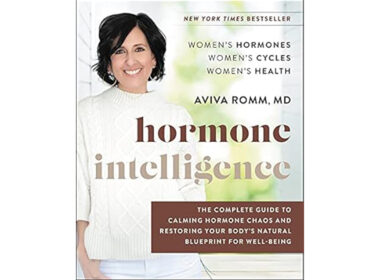Type in the phrase “milk supply” on Pinterest or Google, and you’re likely to find oodles of recipes, baked goods, herbs, and over-the-counter compounds that claim to “boost milk supply.” If I’m being frank, in my work as a Lactation Consultant, most of my clients are struggling with milk supply because of ineffective or inefficient milk removal from the breast. Prioritizing sufficient milk removal is the best way to “boost milk supply.”
But occasionally, I see a mom struggling with low milk supply because of Insufficient Glandular Tissue (IGT). This means that even with the proper suckling or pumping needed to efficiently remove milk from the breast, she will not be able to make a full supply and will need to supplement with formula or donor milk. Contrary to what people often think, a diagnosis of IGT does not mean that a mom can’t breastfeed, but it does mean breastfeeding might look a little different than anticipated.
IGT is not due to “small breasts.” Size is not indicative of the quantity of glands. IGT breasts can be big, small, medium, round, flat, high or low—the only thing they all have in common is that the glandular tissue is simply not sufficient to make a full milk supply [1].
The biggest red flags for potential IGT are widely spaced breasts, and particularly those that don’t grow during pregnancy. The exact root cause of IGT is still being studied, but there is a correlation between IGT and obesity during puberty and postpartum [2] and certain hormonal disorders (such as PCOS) [3]. Another possible correlation is IGT and use of hormonal birth control during puberty.
Did you catch that last one? If you, your daughter, or a loved one was put on the pill during puberty, you could experience impaired lactation. Did the doctor explain that to you? No? Didn’t think so.
How breast tissue matures
Breast maturation begins in the womb. “As early as 4 to 6 weeks of gestation, mammary-specific progenitor cells may be seen… Around day 35 of gestation, proliferation of paired areas of epithelial cells in the epidermis of the thoracic region occurs” [4]. Up until age 2, breast tissue goes through a process of “epithelial differentiation”—in other words, when cells mature and prepare for the ability to produce milk (breast tissue then remains dormant until puberty). Exposure to toxins like dioxin in utero can predispose a woman to have insufficient breast growth. This is also why endocrine disruptors should especially be avoided during pregnancy and lactation [5].
Alveoli—these are the small sacs that fill with milk—are laid during each menstrual cycle, through the exposure of cyclical estrogen and progesterone. Estrogen is responsible for elongation of milk ducts (the branches that hold the alveoli) while progesterone works on ductal side branching. As ductal elongation continues, the rest of the breast tissue fills in with adipose tissue, blood vessels, immune cells, and fibroblasts. After puberty, breast tissue remains relatively stable until the final stage of maturation during pregnancy [6].
That’s right—breasts are not considered fully developed until they’ve gone through a full pregnancy. During this time of intense estrogen and progesterone exposure, as well as human placental lactogen, the ductal system expands and branches out into the adipose tissue for its final stage of growth in preparation for lactation [7].
So what does the pill have to do with it?
Hormonal birth control and IGT are correlated for two reasons. The first is that hormonal birth control is often given to teens to “cure” period problems. These period problems likely stem from hormonal disorders that affect breast tissue maturation and, therefore, future lactation. These hormonal conditions include, but are not limited to: PCOS, luteal phase defects, thyroid issues, and insulin resistance.
Restorative care—not suppression of symptoms—should be prioritized for teen’s reproductive and general health. Restorative care will protect not only her future fertility and lactation but also her future bone, heart, and immune health.
The second reason is that a teen on hormonal birth control doesn’t have monthly, cyclical exposure to their own hormones that are necessary for proper ductal growth. The artificial hormones in birth control do not have the same effect as endogenous ones.
A 2021 research study found that “[different] progestins have distinct biological activities in the human breast epithelium depending on their androgenic properties.” It also found that “progestins routinely included in contraceptives have properties that overlap with testosterone, androgenic progestins, which induce expression of important mediators of progesterone receptor signaling and consistently elicit proliferation of human breast epithelial cells” [8].”
This means the hormones in modern contraceptives cause breast tissue growth—but not in the same way that endogenous hormones would.
For many, increased breast size is a common side effect of hormonal contraception. It’s been touted that since the pill (and any of its formulations) “trick the body into thinking it’s pregnant,” the breast growth women experience while taking hormonal contraceptives is akin to breast growth in early pregnancy. But we now know differently.
Exposure to androgenic progestins causes hyperproliferation with cellular changes. Breast tissue growth during pregnancy is biologically normal, while growth during hormonal contraceptive use is not normal. This is also probably why full-term pregnancy (particularly during a woman’s twenties) has a protective factor against breast cancer [9] while hormonal contraceptive use does the opposite [10].
It’s important to note that just because you were on hormonal contraception as a teen doesn’t automatically mean you will struggle with IGT. Conversely, some women struggling with IGT have never used a hormonal contraceptive. Rather, hormonal contraceptive use during teenage years just seems to be one of the pieces in unlocking the IGT puzzle. And it’s certainly one more reason to steer clear of hormonal birth control for the teens in your life.
What if I think I have IGT?
If you are having lactation problems, you should schedule a full consultation with an International Board Certified Lactation Consultant, who can confirm the source of potential low milk supply, rule out baby-stemmed issues, and work toward a care plan that will suit both the mom and baby. You don’t have to throw the baby out with the bathwater—breastfeeding in some capacity is still possible.
If you are expecting and hoping to breastfeed, but are worried you may have IGT, you can have your breast tissue examined by your health practitioner or a lactation consultant. But, this is likely premature, as you won’t really know how lactation will unfold until you can attempt it. That’s why it’s so important to have lactation support lined up for you when you will need it.
In conclusion, the possible connection between hormonal birth control use during puberty and IGT is one worthy of your consideration. Teenagers may not be thinking about breastfeeding yet, but one day down the line, they may deeply desire to do so—and we want to give them every chance to succeed when that time comes.
References
[1] Huggins K, Petok E, Mireles O. Markers of lactation insufficiency: a study of 34 mothers. Curr Issues Clin Lact. 2000;1:25–35. [2] Bever Babendure J, Reifsnider E, Mendias E, Moramarco MW, Davila YR. Reduced breastfeeding rates among obese mothers: a review of contributing factors, clinical considerations and future directions. Int Breastfeed J. 2015;10:21. Published 2015 Jul 1. doi:10.1186/s13006-015-0046-5 [3] Marasco, L., Marmet, C., & Shell, E. (2000). Polycystic ovary syndrome: a connection to insufficient milk supply? Journal of Human Lactation, 16(2), 143-148. [4, 6, 7] Javed A, Lteif A. Development of the human breast. Semin Plast Surg. 2013 Feb;27(1):5-12. doi: 10.1055/s-0033-1343989. PMID: 24872732; PMCID: PMC3706056. [5] Rudel RA, Fenton SE, Ackerman JM, Euling SY, Makris SL. Environmental exposures and mammary gland development: state of the science, public health implications, and research recommendations. Environ Health Perspect. 2011 Aug;119(8):1053-61. doi: 10.1289/ehp.1002864. Epub 2011 Jun 22. PMID: 21697028; PMCID: PMC3237346. [8] Shamseddin M, De Martino F, Constantin C, et al. Contraceptive progestins with androgenic properties stimulate breast epithelial cell proliferation. EMBO Molecular Medicine. 2021. doi:10.15252/emmm.202114314 [9] Husby A, Wohlfahrt J, Øyen N, Melbye M. Pregnancy duration and breast cancer risk. Nat Commun. 2018;9(1):4255. Published 2018 Oct 23. doi:10.1038/s41467-018-06748-3 [10] Contemporary hormonal contraception and the risk of breast cancer. New England Journal of Medicine. 2018;378(13):1263-1266. doi:10.1056/nejmc1800054Additional Reading
A letter to my pre-charting self







